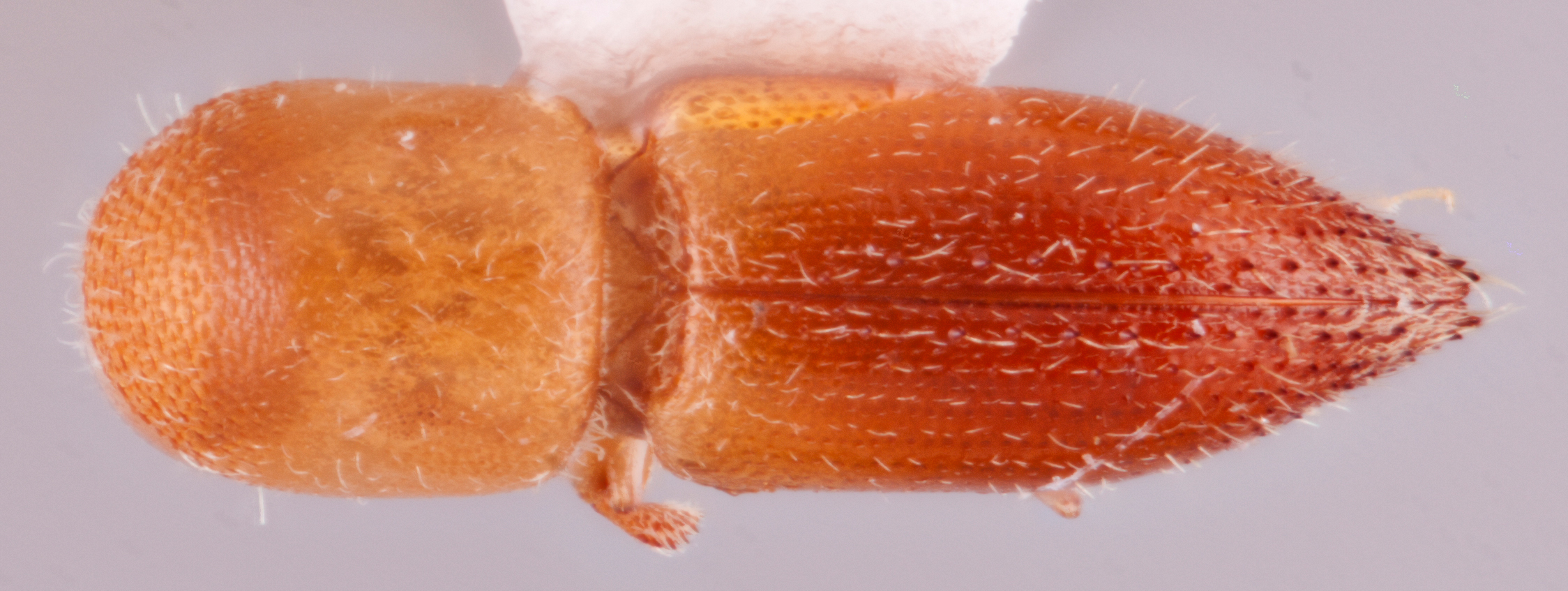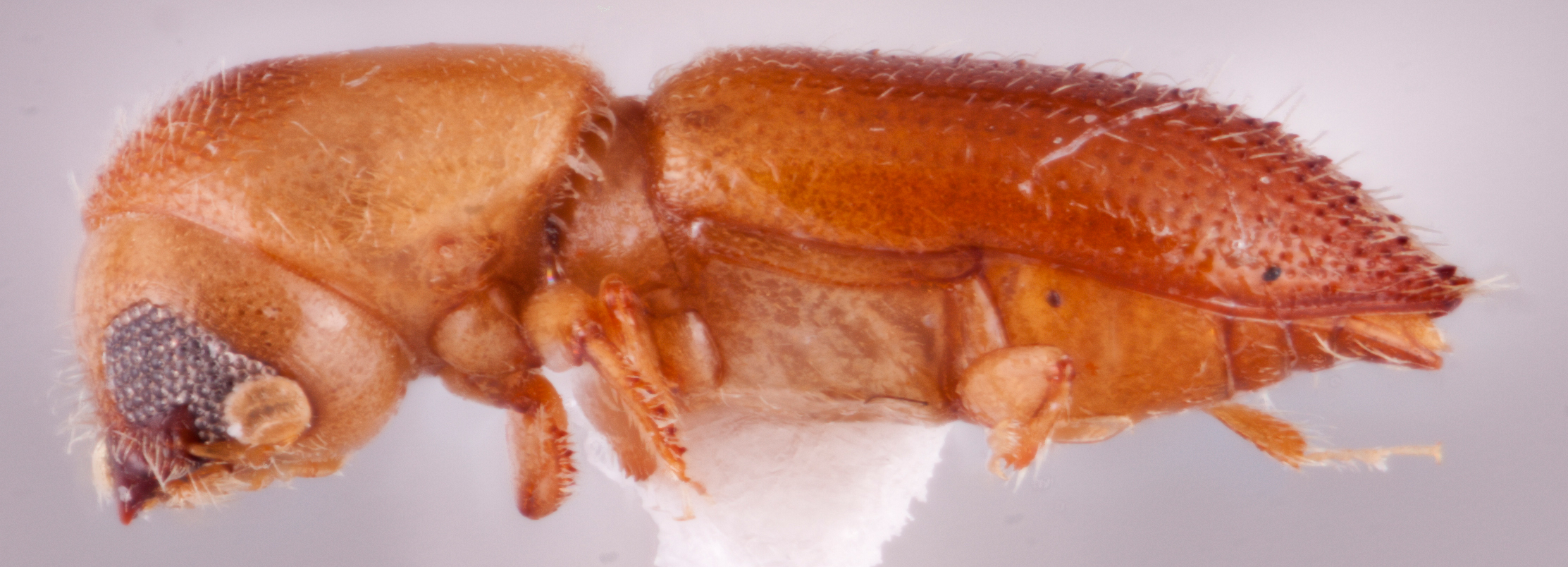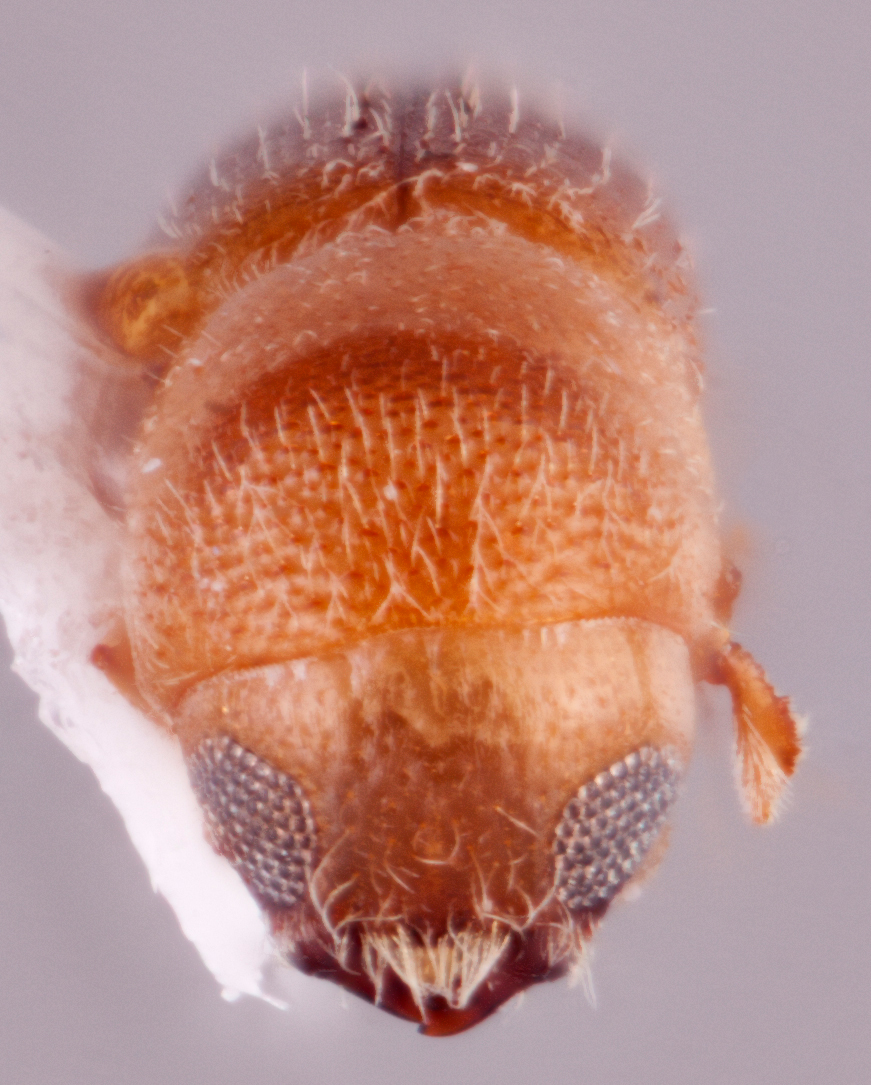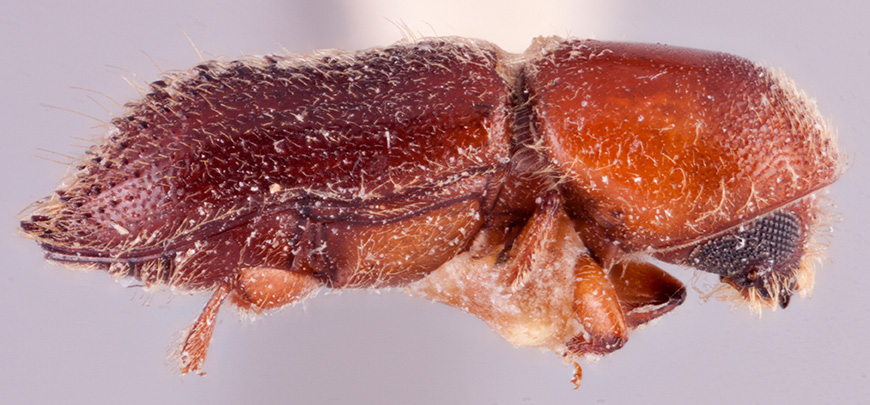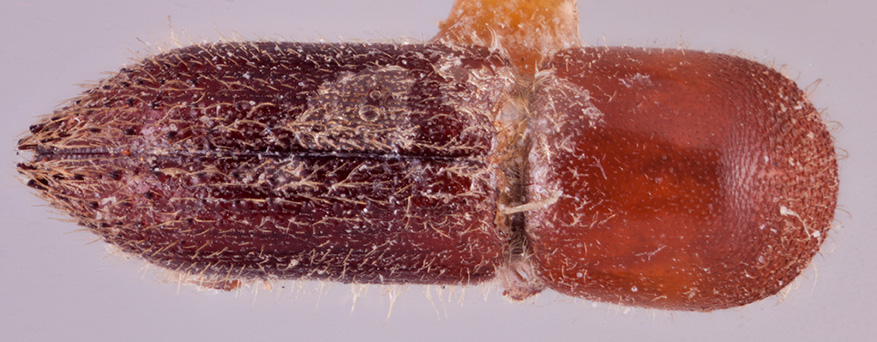Cryptoxyleborus
|
Cryptoxyleborus stenographus; R.K. Osborn |
|
Cryptoxyleborus stenographus; R.K. Osborn |
|
Cryptoxyleborus stenographus; R.K. Osborn |
|
Cryptoxyleborus stenographus; R.K. Osborn |
|
Cryptoxyleborus eggersi; R.K. Osborn |
|
Cryptoxyleborus eggersi; R.K. Osborn |
Taxonomy
Cryptoxyleborus Wood and Bright, 1992: 828.
Synonyms
Cryptoxyleborus Schedl, 1937a: 550. Unavailable name (see Alonso-Zarazaga and Lyal, 2009).
Cryptoxyleborus Alonso-Zarazaga and Lyal, 2009: 99.
Diagnosis
Body length from 1.40−4.40 mm long, elongate (3.00−4.17 times as long as wide) with elytralelytral:
pertaining to the elytra
apexapex:
point or edge furthest from the body; opposite of base
 attenuate or acuminateacuminate:
attenuate or acuminateacuminate:
tapering to a long point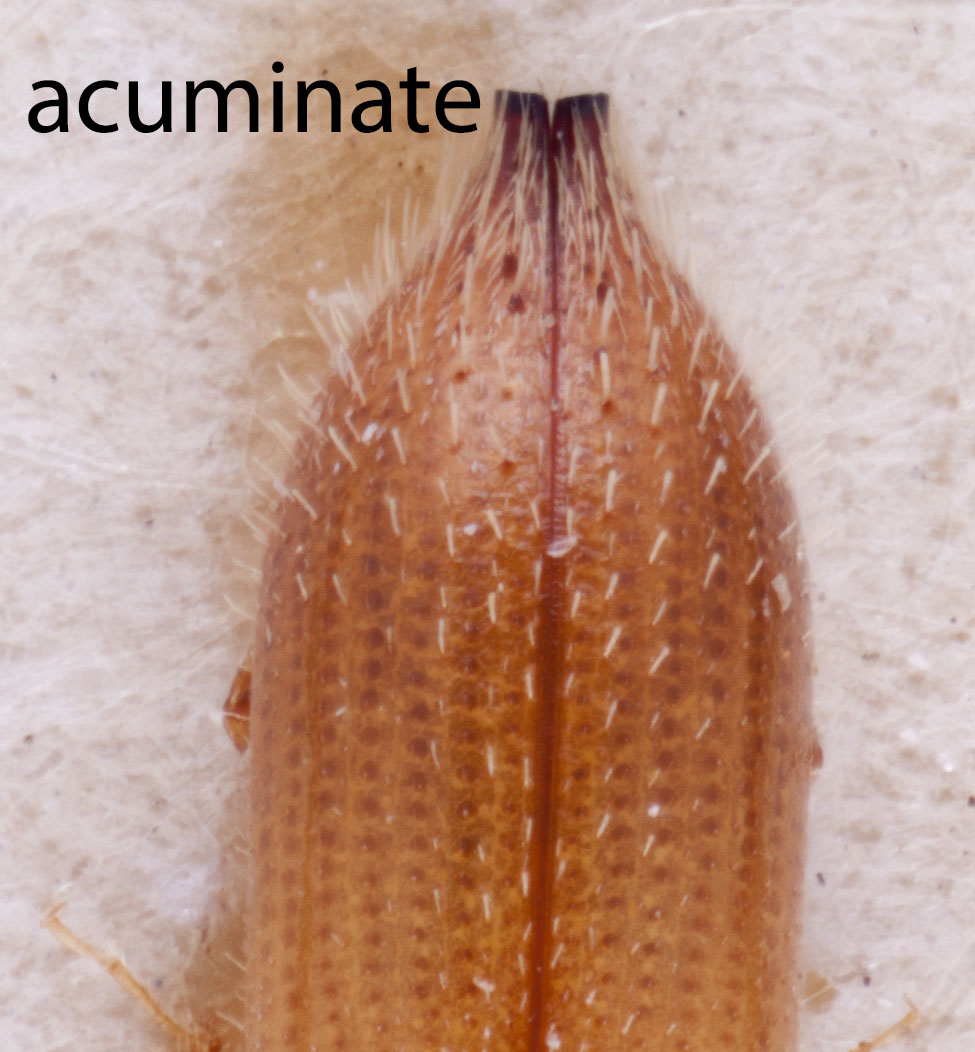 . Cryptoxyleborus is recognized by the distinctive pit mycangiamycangia:
. Cryptoxyleborus is recognized by the distinctive pit mycangiamycangia:
structures used to carry fungal symbionts; highly morphologically variable
 located on the elytraelytron:
located on the elytraelytron:
the two sclerotized forewings of beetles that protect and cover the flight wings
either near the scutellumscutellum:
a shield-like sclerotized plate located at the midpoint of the elytral base
or along the basebase:
point or edge closest to the body; opposite of apex ; scutellum on the basalbase:
; scutellum on the basalbase:
point or edge closest to the body; opposite of apex declivital slope, appearing absent when viewed dorsally; protibia slender and rugoserugose:
declivital slope, appearing absent when viewed dorsally; protibia slender and rugoserugose:
appearing wrinkled on the posteriorposterior:
on the posteriorposterior:
toward the rear end; opposite of anterior
 face; and procoxae contiguous.
face; and procoxae contiguous.
May be confused with
Fraudatrix, Tricosa and Xyleborinus
Distribution
tropical Asia and New Guinea, possibly introduced to Australia
Gallery system
This consists of an unbranched entrance tunnel leading to a single terminal brood chamber in the longitudinal plane (Browne 1961bBrowne 1961b:
Browne FG. 1961b. The biology of Malayan Scolytidae and Platypodidae. Malayan Forest Records 22: 1-255.). The brood chamber is enlarged by the larvae as they develop.
Remarks
All species of Cryptoxyleborus with known hosts only attack trees of the family Dipterocarpaceae (Beaver and Hulcr 2008Beaver and Hulcr 2008:
Beaver RA, Hulcr J. 2008. A review of the ambrosia beetle genus Cryptoxyleborus Schedl (Coleoptera, Curculionidae: Scolytinae). The Coleopterists Bulletin 62: 133-153. https://doi.org/10.1649/1026.1).

